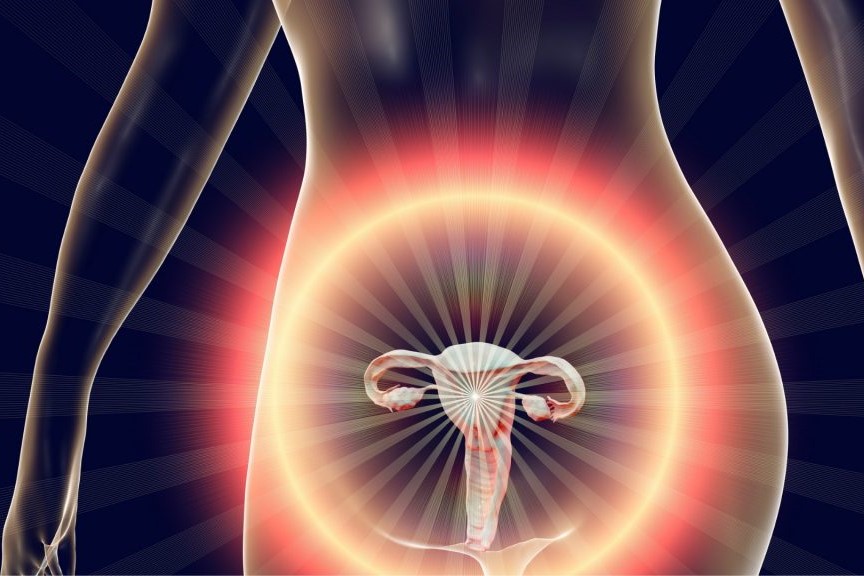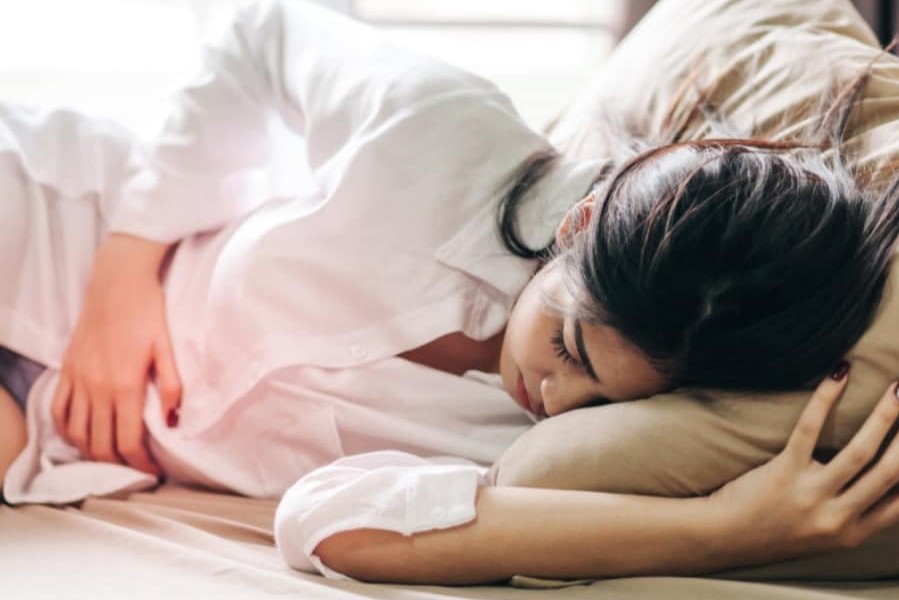
Vulvodynia: what are the symptoms and how to treat it
Vulvodynia is a disorder experienced as discomfort, often described as a painful and burning sensation in the vulvar area despite the absence of visible clinical lesions
If this condition does not extend to the entire vulva but only to the vestibule (the area between the vaginal introitus and the inner part of the labia minora) one speaks of vestibulodynia; one speaks of clitoridodynia when the pain is concentrated on the clitoris.
The term vestibulitis, which is synonymous with vestibulodynia, should be avoided as the suffix -ite indicates an infectious inflammatory condition, which is absent in vulvodynia.
Ninety per cent of vulvodynias are properly vestibulodynia
The pain may be spontaneous or provoked by contact (sexual intercourse, tight clothing, tampons, etc.) or by trivial movements such as sitting or crossing one’s legs.
Very often it is present continuously, accompanying the woman throughout the day.
Vulvodynia affects from adolescence to menopause.
Vulvodynia: what are the causes?
The disorder can have many, often interacting causes, which contributes to aggravating the symptoms.
Patients report the onset of the disorder following repeated candida infections or following physical trauma (episiotomy, biopsy, electrocautery); sometimes following unwanted, painful sexual intercourse in the absence of lubrication, or after psychological trauma.
Behavioural styles such as too tight trousers and underwear; microtraumatising sports activities (cycling, exercise bikes, spinning, horse-riding), excessive use of intimate cleansers; chemicals in topical medicines smeared on the spot, often prescribed to combat burning (e.g. cortisone, soothing creams or vaginal lubricants) are also involved.
Several systems are involved and stressed in this situation: immune, muscular, vascular and nervous systems.
The mechanism most often called into play in chronic pain/burning is the overactivity of mast cells, immune defence cells involved in allergic reactions and acute inflammation.
Excessive stimulation of these cells causes an abnormal immune response with production of inflammatory substances responsible for erythema and irritation.
These mast cells are also responsible for the activation of the nerve growth factor (NGF), which promotes the proliferation of the endings responsible for pain perception.
This results in hyperalgesia, i.e. an amplified and/or exaggeratedly prolonged pain response to an otherwise modest pain stimulus.
Vulvar pain also promotes a defensive reaction of the part, a reaction that provokes a permanent muscle spasm (pelvic floor hypertone), which in turn causes pain; a vicious circle is thus established.
This hypertonus may be preceded by vulvodynia (as in cases of vaginismus) or may be caused by dyspareunia related to the disorder.
Symptoms of vulvodynia
These are the characteristic symptoms of vulvodynia
- vulvar pain and burning spontaneously or as a result of contact with clothing; the disorder is reported predominantly in the vestibular area but may extend to the entire area, affecting the anus and urethral area, with a sense of suprapubic weight and fatigue and burning when urinating;
- numbness and swelling;
- severe pain when touching and attempting vaginal penetration;
- dyspareunia (vaginal pain during sexual intercourse);
- continuous feeling of discomfort, anxiety and depression.
In addition, the patient suffering from vulvodynia
- feels like needle pricks; feels twinges or electric shocks on the pubis, vulva or perianal area;
- has the typical symptoms of an infection (vaginitis or cystitis), but the swab and urine culture are negative;
- trousers and briefs cause irritation which sometimes prevents sitting or walking;
- feels an abrasive sensation at the entrance to the vagina;
- difficulty urinating and urine burning;
- these symptoms last for more than three months.
Diagnosis of vulvodynia
The symptomatology with which vulvodynia presents itself, which emerges from a careful history of the patient, will be of great help in guiding the diagnosis.
Objective examination does not indicate any abnormality of the part; sometimes a redness circumscribed to the vestibular area is observed, but not supported by any other specific sign of bacterial, fungal or viral inflammation.
Therefore, in the absence of a specific cause that, such as an infection or other pathology, is accompanied by visible signs in the vulvar area (e.g., cuts or lesions), the diagnosis of vulvodynia is very likely.
A very important, but not always present, semiological sign is increased sensitivity to pressure on the vulva and positivity to the Q-tip test or swab test.
This test consists in exerting, with a Q-tip, light pressure on specific points of the vestibular area that triggers, in the woman suffering from vulvodynia, an intense and acute pain.
Therapy for vulvodynia: How is it treated?
Vulvodynia is a complex syndrome, often undiagnosed because there is little or no clinical evidence.
Recognising the syndrome and explaining to the woman the reasons for her disorder is already an important first step.
Awareness makes it possible to deal more calmly with the various therapeutic aids for the condition, which is characterised by ups and downs.
The relationship with a doctor who knows the problem in all its aspects is decisive for the resolution of the disease: since the causes are varied and diverse, the therapy must not only be customised but also adapted and changed in accordance with the symptomatology.
The treatment of vulvodynia therefore involves various approaches, all aimed at reducing the frequency and intensity of the painful sensations.
The most effective drug therapies are cyclic antidepressants and anticonvulsants that, in small doses, interrupt chronic pain circuits and abnormal nerve sensitivity by altering the levels of neurotransmitters (chemicals that conduct impulses from one nerve to another).
Topical anaesthetic creams (lidocaine, for example) can be applied directly to the vestibular site for transient pain relief, especially before sexual intercourse.
Creams inhibiting mast cell activity (e.g. adelmidrol and sodium cromoglycate) are also used.
If pelvic muscles are very contracted due to pain, physiotherapy may be useful.
Recommended is electromyographic biofeedback of the pelvic muscles, a self-relaxation technique that teaches how to control muscle contractions and the pain they cause.
Each physical therapy programme is customised according to the results of the patient’s initial assessment.
The supervision of a physiotherapist is therefore advisable.
TENS (TransCutaneous Electrical Nerve Stimulation) is also used. This technique consists of applying electrodes to the affected area that emit low-frequency electrical impulses capable of inhibiting the nerve afferents involved in pain transmission.
Low frequencies are also used to stimulate the production of neuropeptides and other chemical mediators, such as endorphins and opiates, substance P, involved in pain perception and transmission.
Self-massage exercises, both internal and external, which are performed by exerting pressure on pain points, are also useful.
Physical therapies, if performed regularly, provide relief in 80% of cases.
Very recently, promising results have been achieved with the therapies primarily used to combat vaginal atrophy (ospemifene and fractional CO2 LASER).
Through effective vascular irrigation of the submucosal stroma, these headmasters promote normal re-epithelialisation of the vulvar mucous membranes and an increase in elastic and collagen fibres that prevent irritative stimuli from reaching the rich vestibular and vulvar innervation that is irritated and hyperalgesic.
In addition to medical and pharmacological remedies, a lifestyle and behavioural approach should be adopted to minimise irritative stimuli.
These are the precautions
- wear white cotton underwear and comfortable, loose-fitting trousers.
- Do not wear underwear overnight.
- Avoid frequent washing. For the vestibular area, water is sufficient.
- Avoid vaginal applications of spray deodorants, perfumes, vaginal douches, depilatory creams.
- Use appropriate intimate cleansers: mild and unscented.
- Replace internal tampons with external ones, preferably cotton, washable and reusable.
- Use lubricants suggested by your doctor to make intercourse more comfortable. Simple vegetable oil can also be used.
- Avoid physical exercises that involve rubbing and friction on the vulvar region (e.g. cycling, cycling or spinning).
Read Also:
Emergency Live Even More…Live: Download The New Free App Of Your Newspaper For IOS And Android
What Is Vulvodynia? Symptoms, Diagnosis And Treatment: Talk To The Expert
Accumulation Of Fluid In The Peritoneal Cavity: Possible Causes And Symptoms Of Ascites
What’s Causing Your Abdominal Pain And How To Treat It
Pelvic Varicocele: What It Is And How To Recognise The Symptoms
Can Endometriosis Cause Infertility?
Transvaginal Ultrasound: How It Works And Why It Is Important
Candida Albicans And Other Forms Of Vaginitis: Symptoms, Causes And Treatment
What Is Vulvovaginitis? Symptoms, Diagnosis And Treatment



